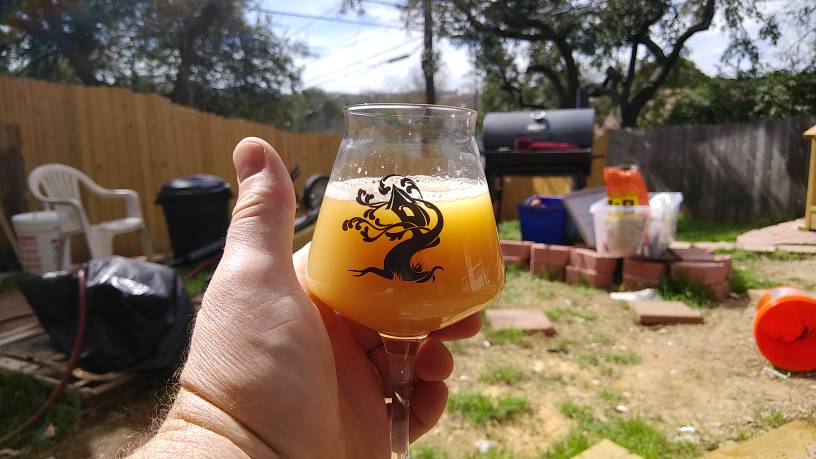The ones that “biotransform” the best you might not use in an IPA.
It requires the yeast to have the beta glucosdiase properties.
Lalleman New England does
- thought to be the dry version of Conan but I’m not sure. Supposedly this yeast sucks and consequently hasn’t been produced in 11g packs.
I still haven't got round to listening to that MBAA podcast, but before anyone gets too carried away...
People got very excited about yeast glucosidases a while back, potentially a glucosidase could release a lot of flavour compounds that currently drop out in the hop waste. But then it was found that the beer yeasts tend to produce very little if any glucosidase (as first found by
Daenan et al 2008, and
updated by the Shellhammer lab 2017). But releasing compounds from hops is just one of the variety of processes that we refer to as biotransformation - the interesting conversions of terpenols will need different enzymes.
So people started looking at the wine yeasts with glucosidase activity, in particular QA23 some 3-4 years ago as that was about the only one that was available in retail packs. But AIUI even that didn't really seem to do much in the context of the experimental conditions that were tried.
This was one reason I created
my list of wine yeasts by killer and POF status, to filter out ones that might be beer friendly. Uvaferm 228 is an obvious candidate, being non-killer and POF- as well as having reasonable glucosidase activity per Daenan et al, but it's not officially available in retail form, although I did find some shops in Eastern Europe breaking down commercial bricks. More recently Scott Janish (or was it Mike Tonsmeire?) has tweeted pictures of him playing with bricks of some of the new wine yeasts out of Stellenbosch, which again seem to be only available in commercial bricks in South Africa. So he's not giving up on the idea, even if it does mean looking out some fairly unusual yeasts.
But releasing compounds from glycosides is just one stage in the journey.
PS Yes Lallemand New England is derived from commercial beers made with a Conan derivative. The problem is not that "it sucks" from a brewing perspective, but it just hates being dried, at the moment
they're quoting 1billion viable cells per gram, versus 6 billion /g for their other strains. But they claim to be working on the viability, the last time I talked to a rep about it he said retail packs would be available in early 2019 but I'll believe it when I see it....
When
Scott Janish compared a Conan (GY054 Vermont) against 1318, he found that relative to the Conan, he "thought the aroma of the 1318 London Ale III beer was slightly similar but turned down about 20% and a little more true to the hops used...Rather than a huge sticky orange lifesavers aroma, the London strain was more of an orange sherbert with a slight lemon/lime thing."
I read that as 1318 taking 20% of the hop flavour and transforming it into something else compared to the activity of the Conan. I'd question whether the slight lemon/lime thing is "a little more true to the hops", I suspect it's just he's so used to the taste of slightly biotransformed Citra that he thinks the lime is normal. When I compared T-58 to Mangrove Jack M36 on Chinook, the M36 gave the classic Chinook grapefruit, whereas the T-58 had about 20% less flavour and the grapefruit had turned into lime.
So my interpretation of that is that both T-58 and 1318 have relatively more biotransformation activity compared to M36 and GJ054 Vermont.
But they are just one-off experiments, more data is needed. I've got as far as buying hops for more experiments and sterilising some bottles, I just need to get my backside in gear and do the tests!







